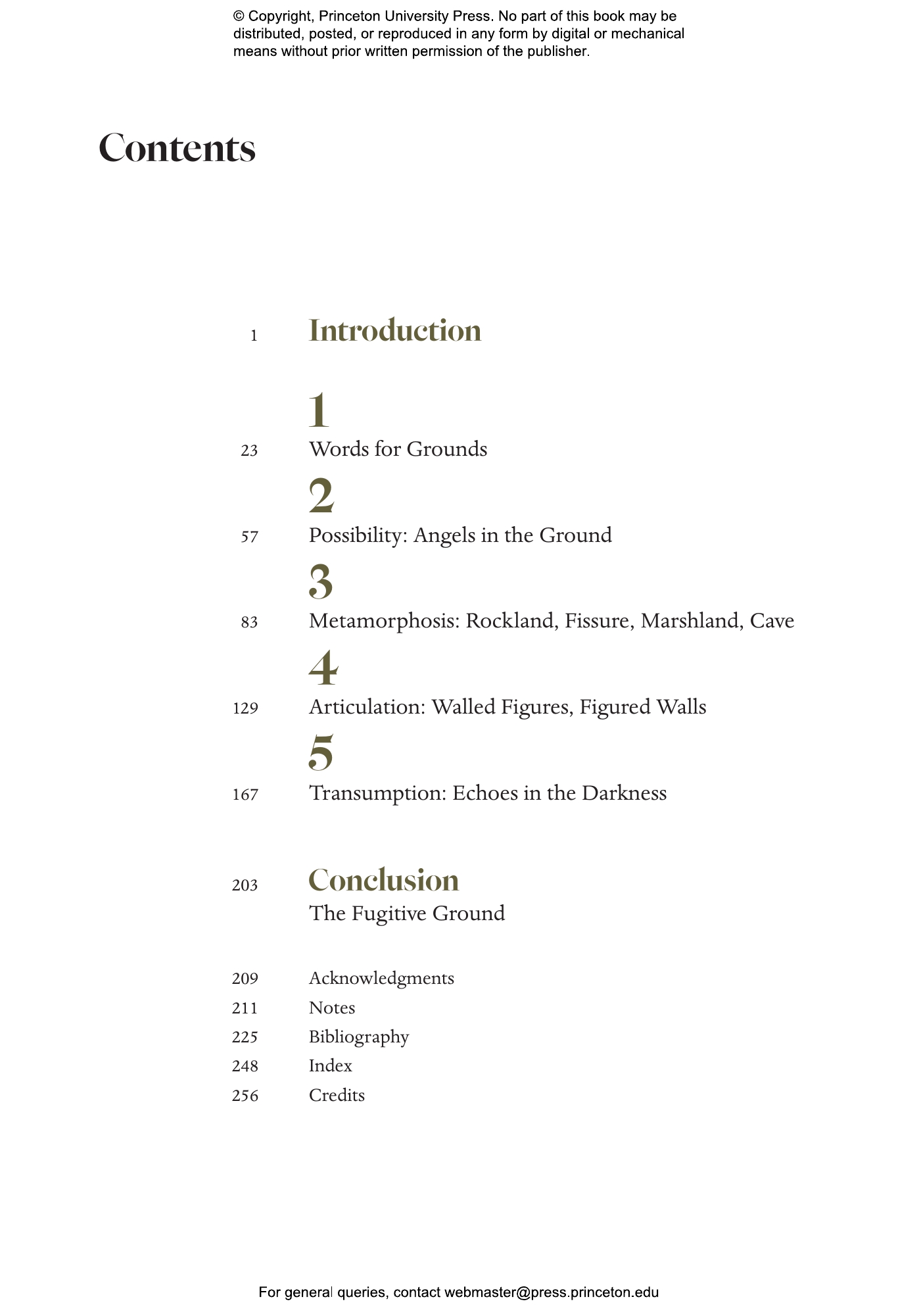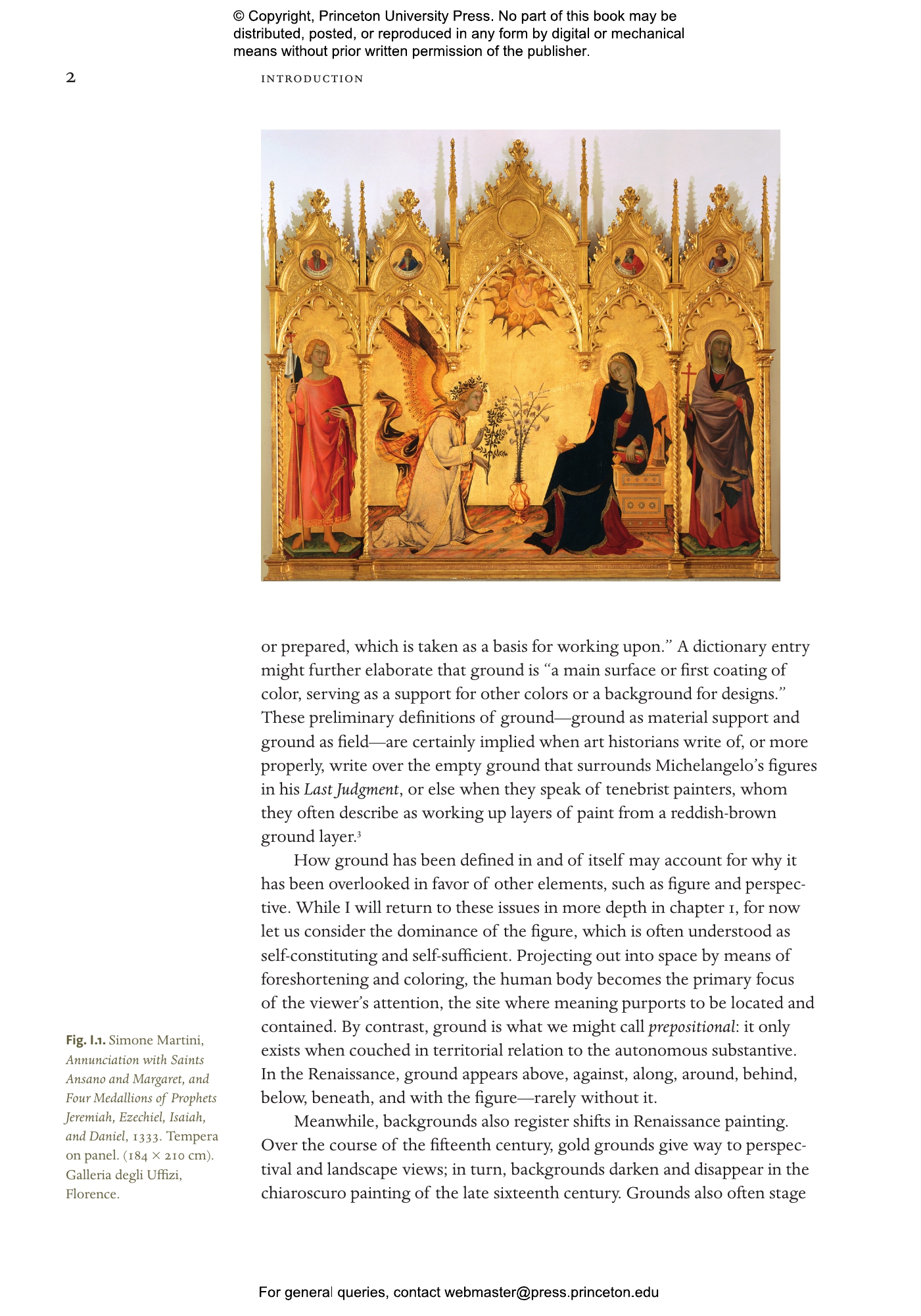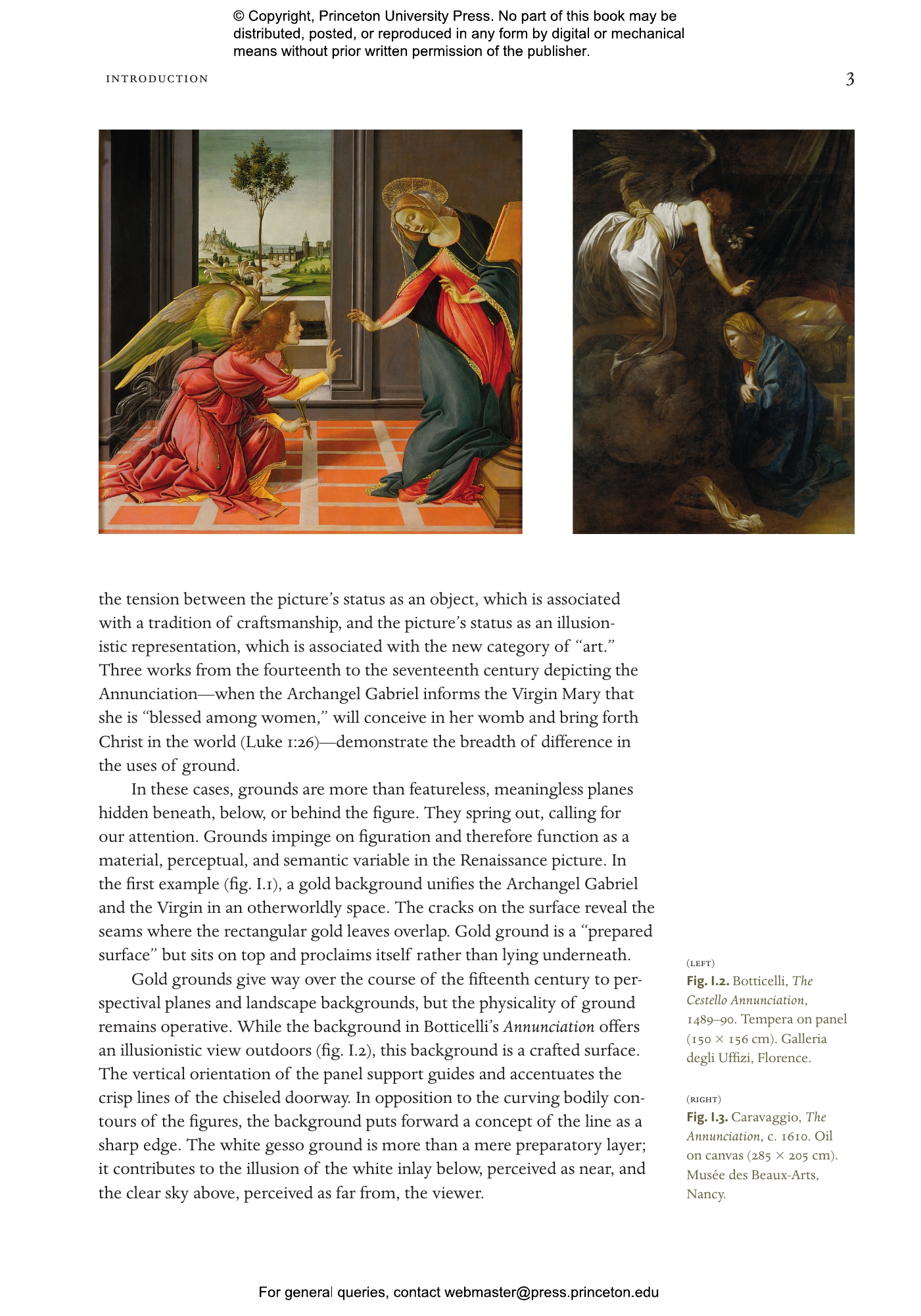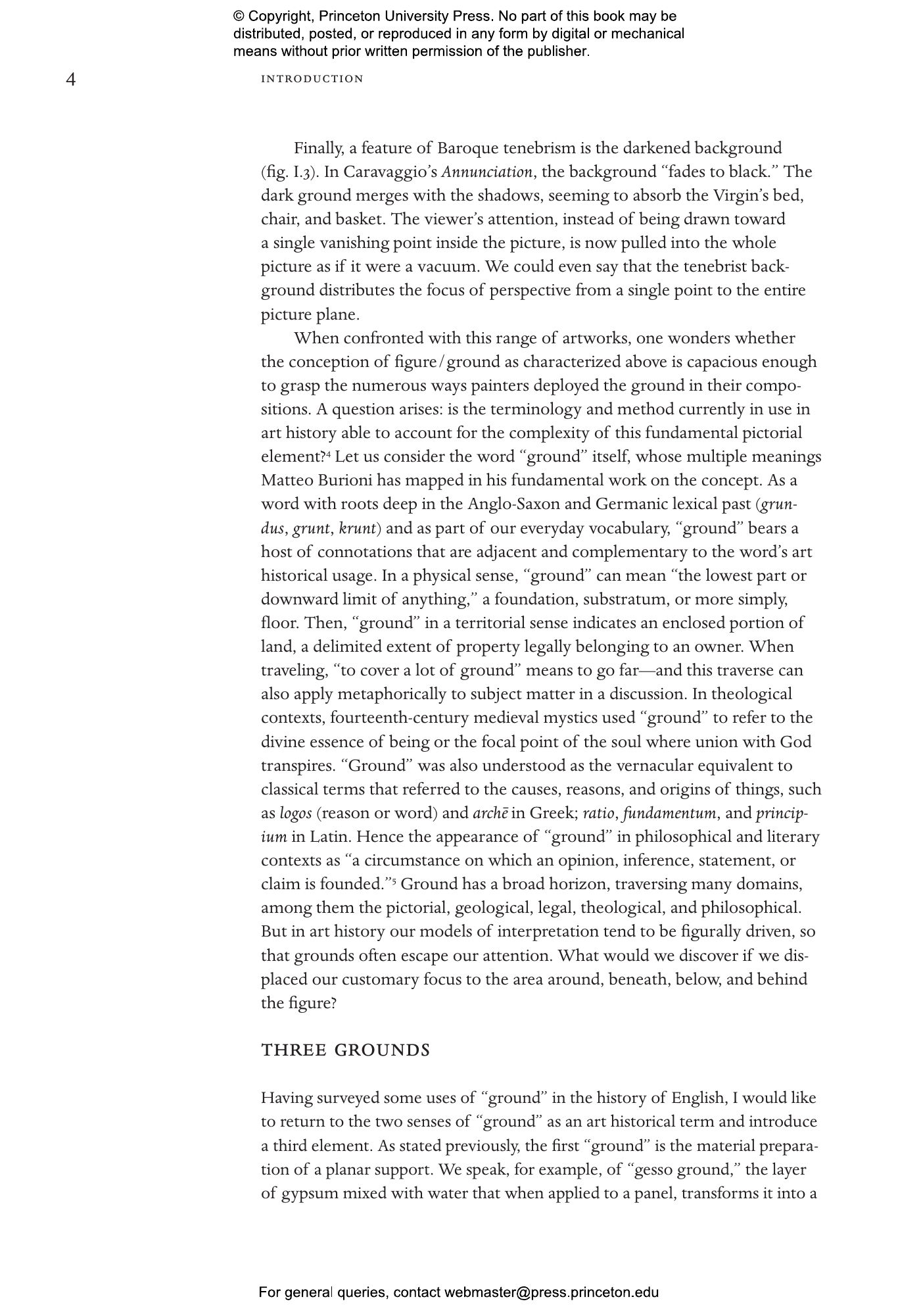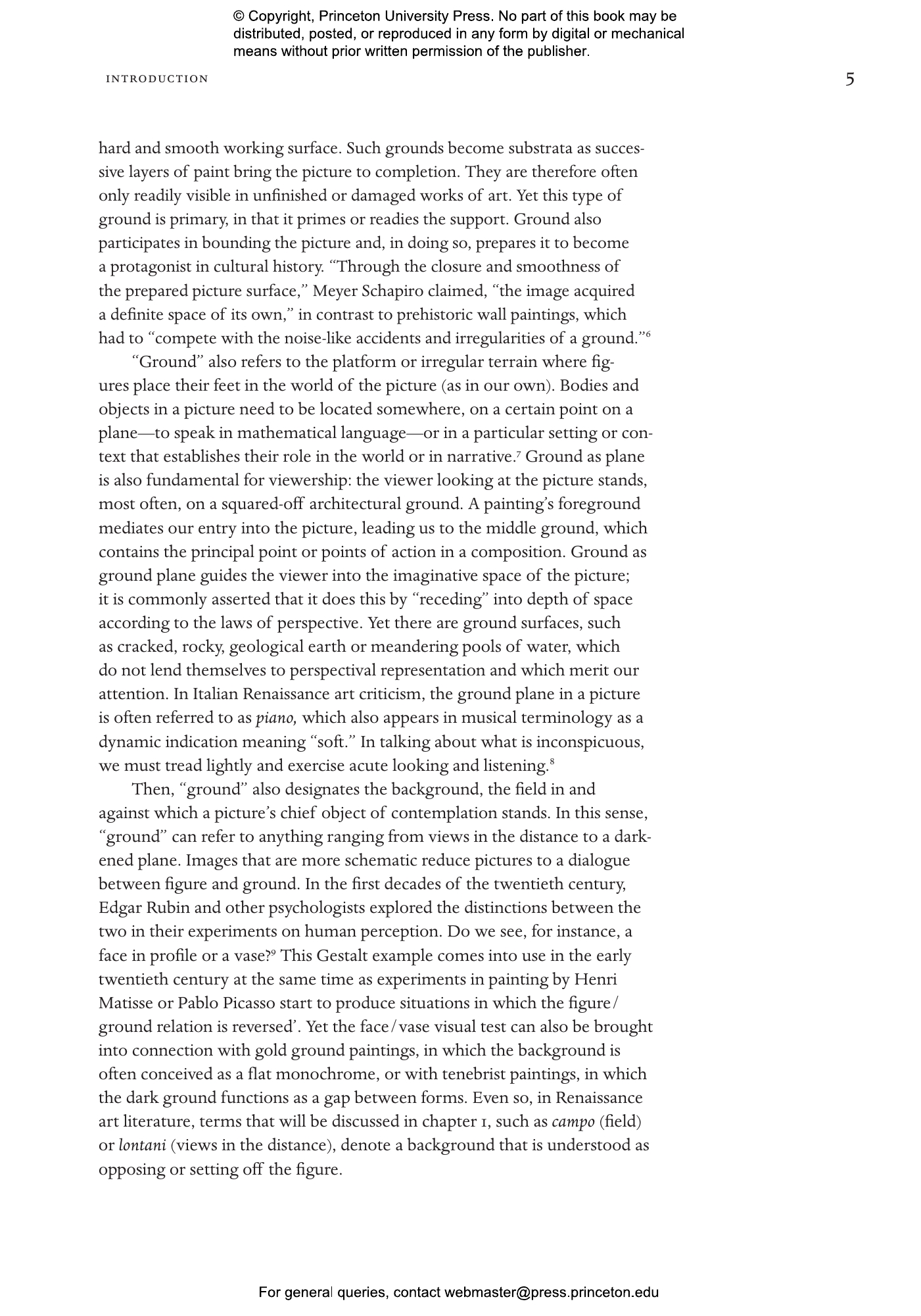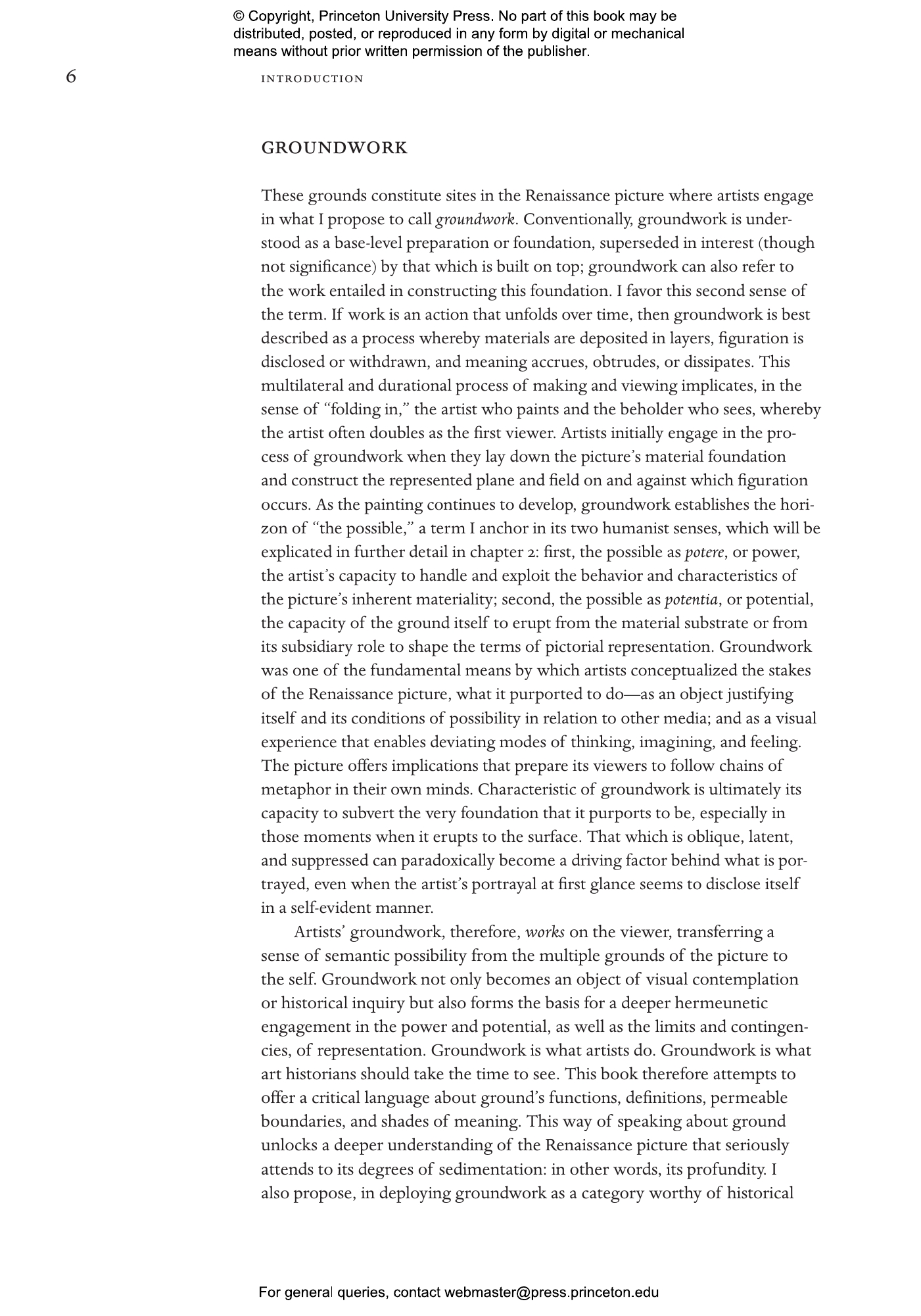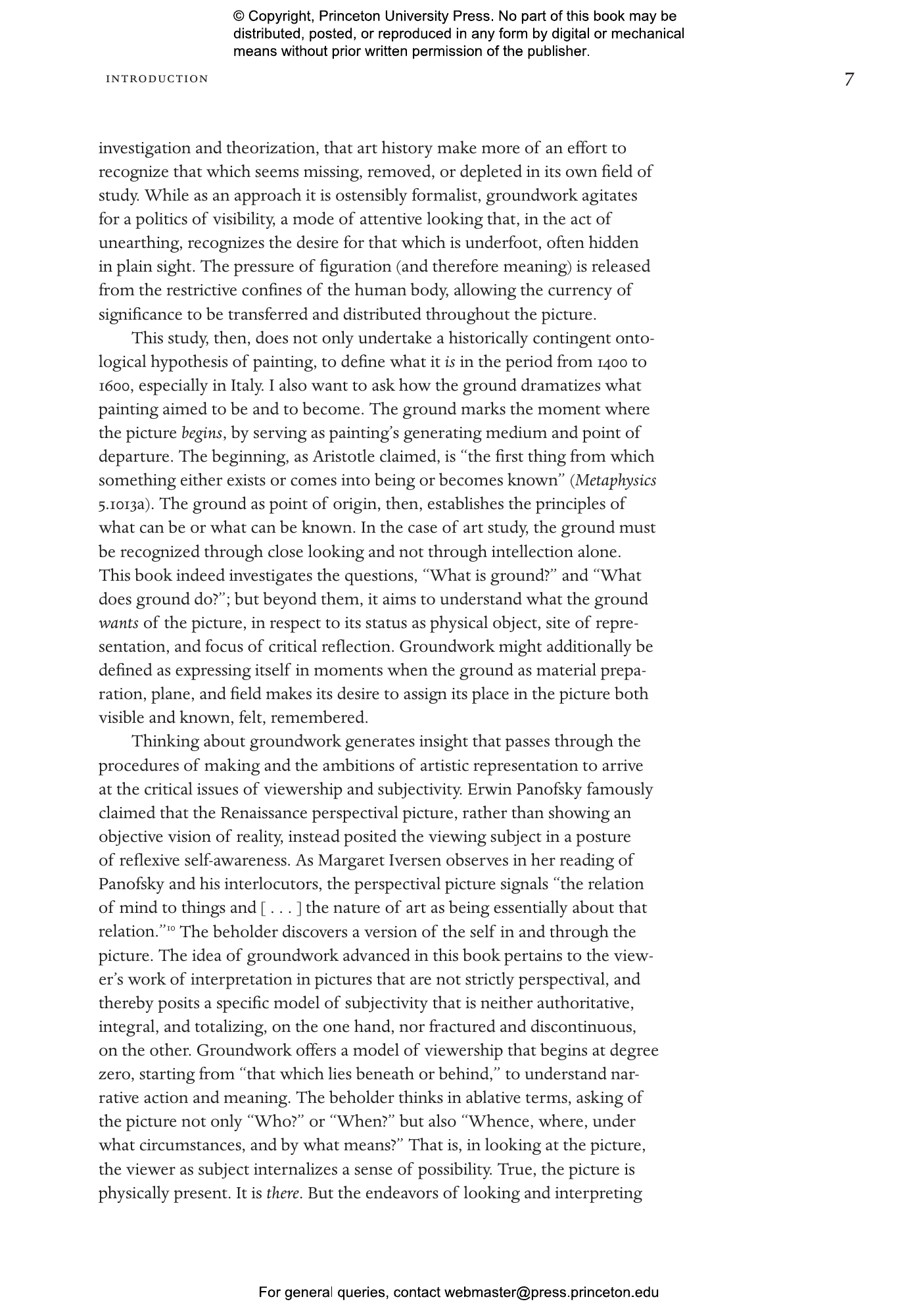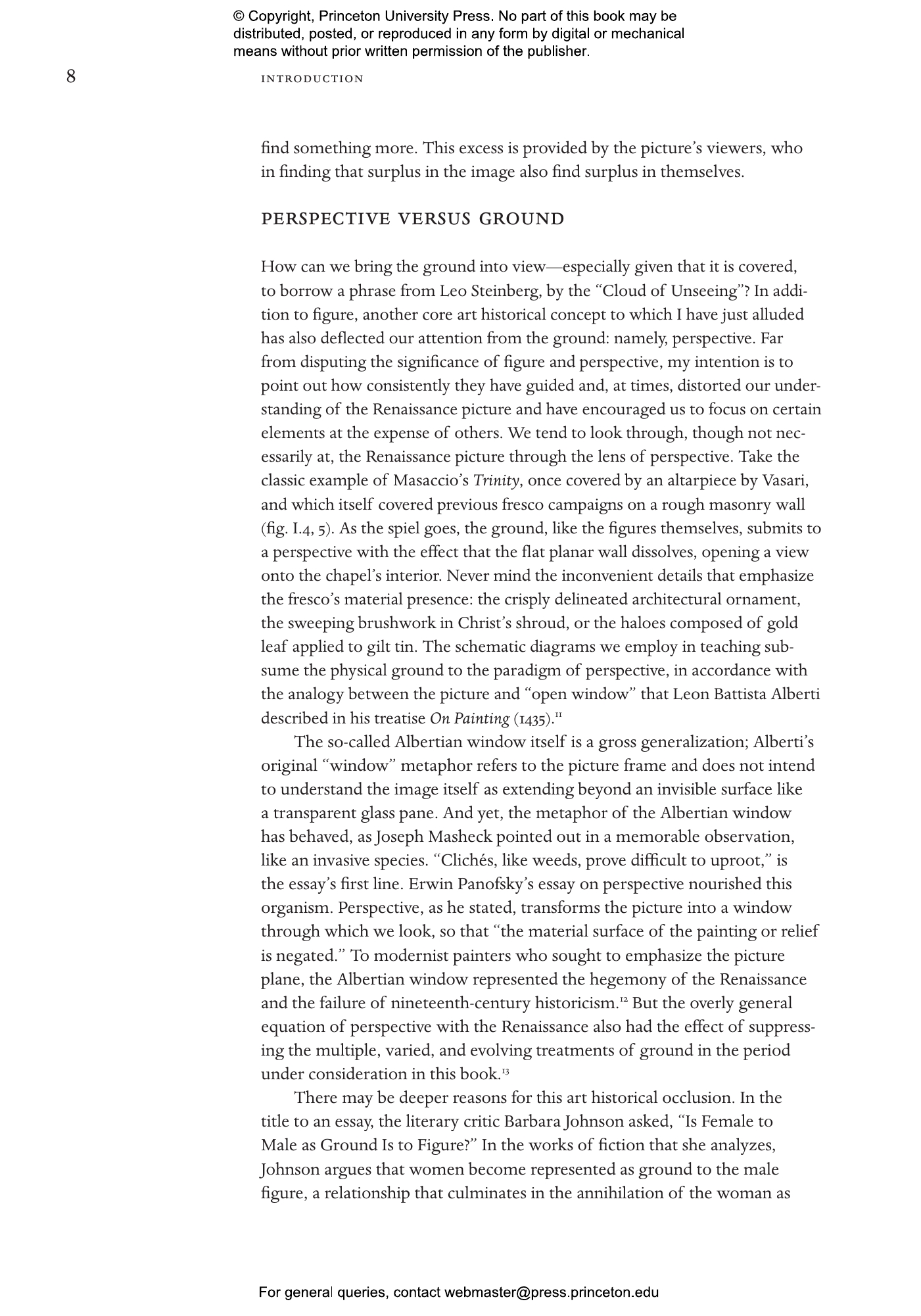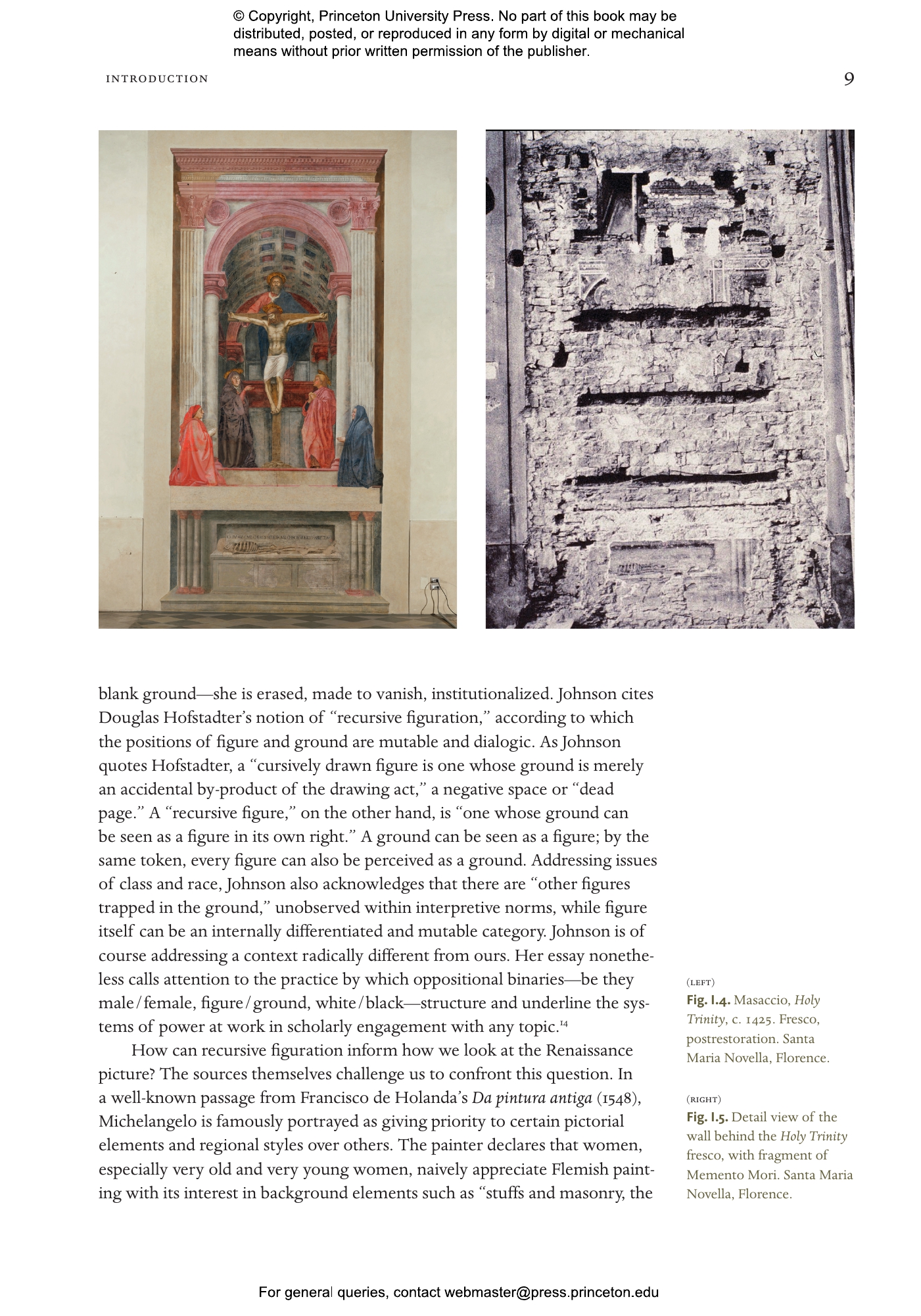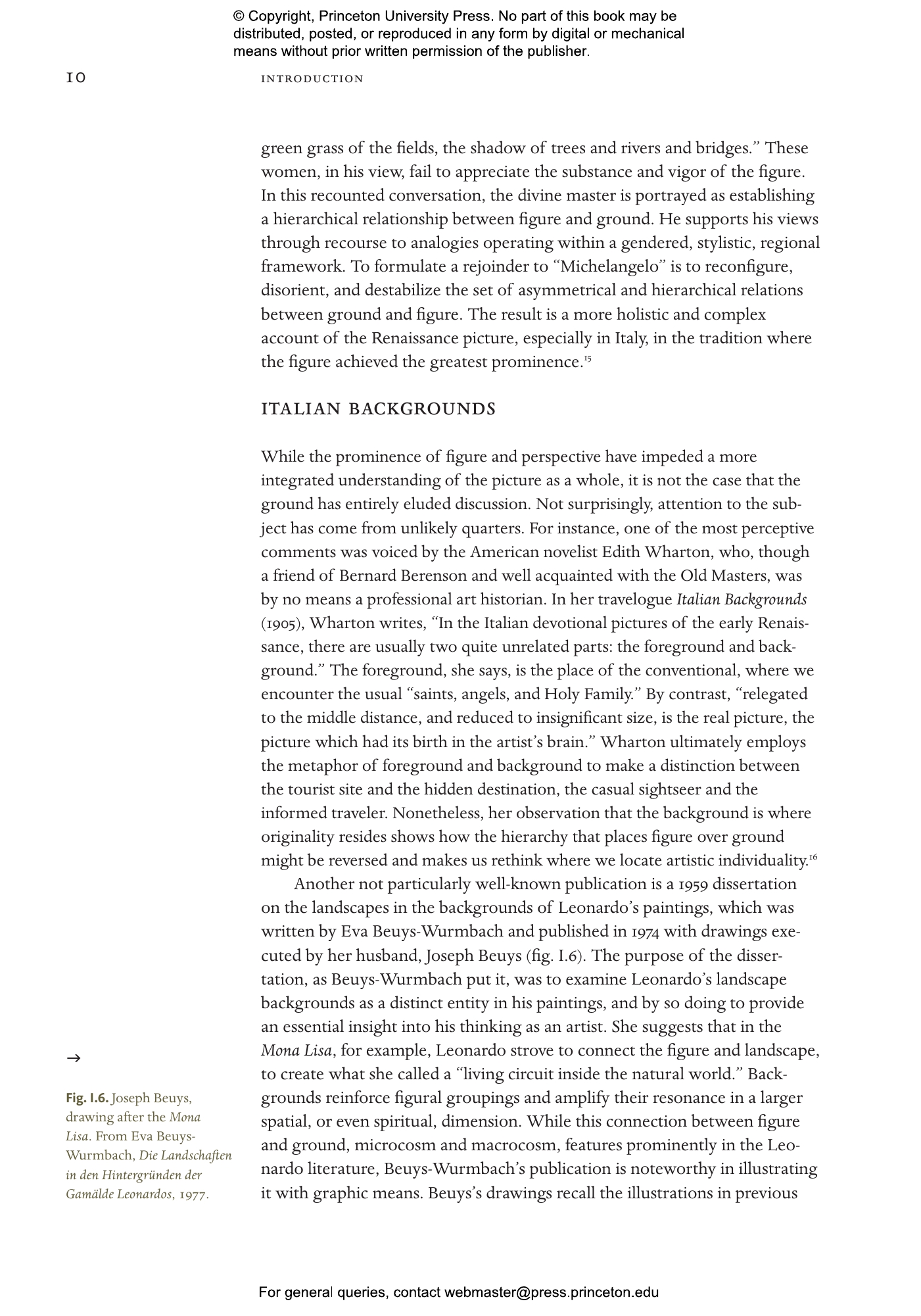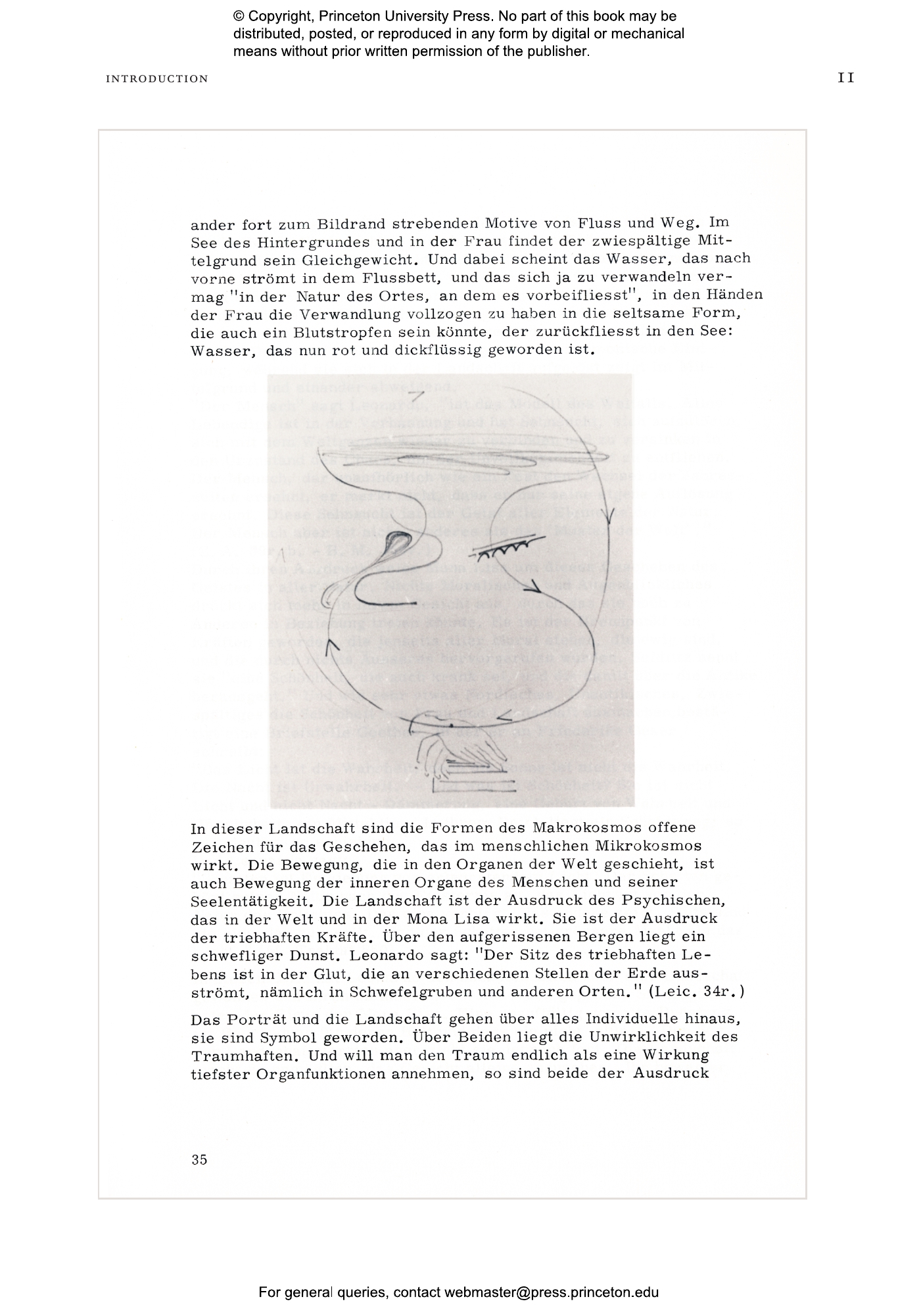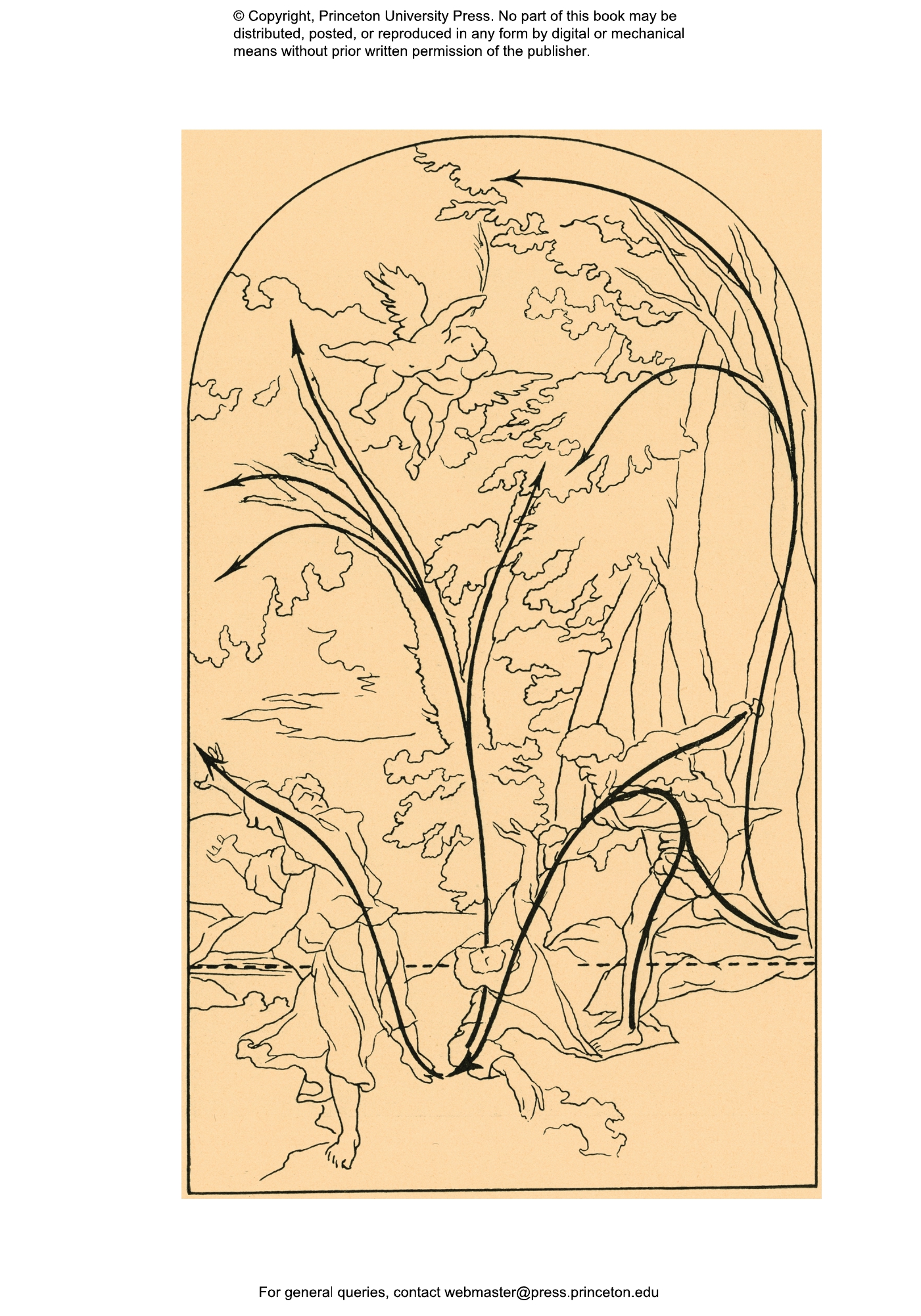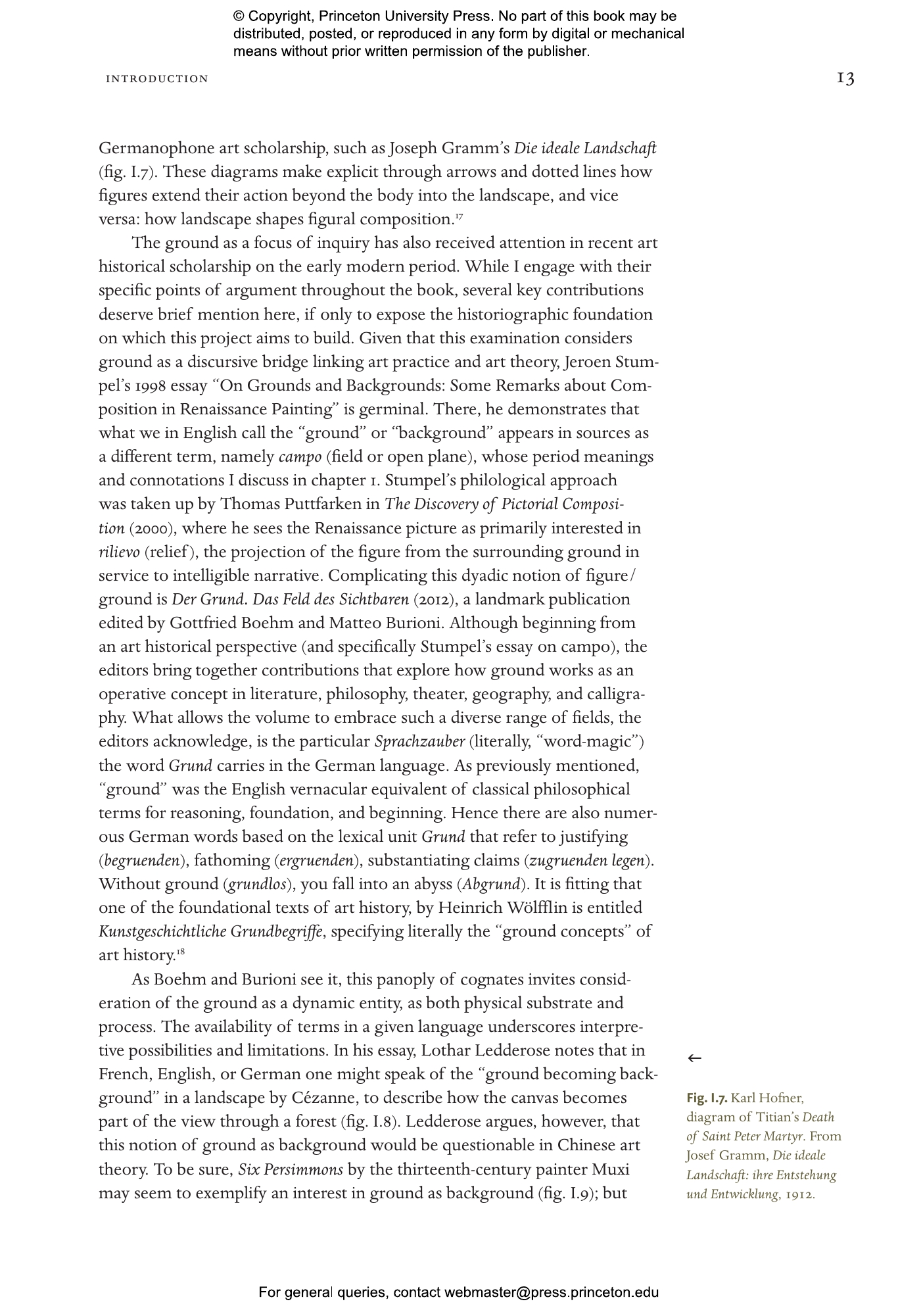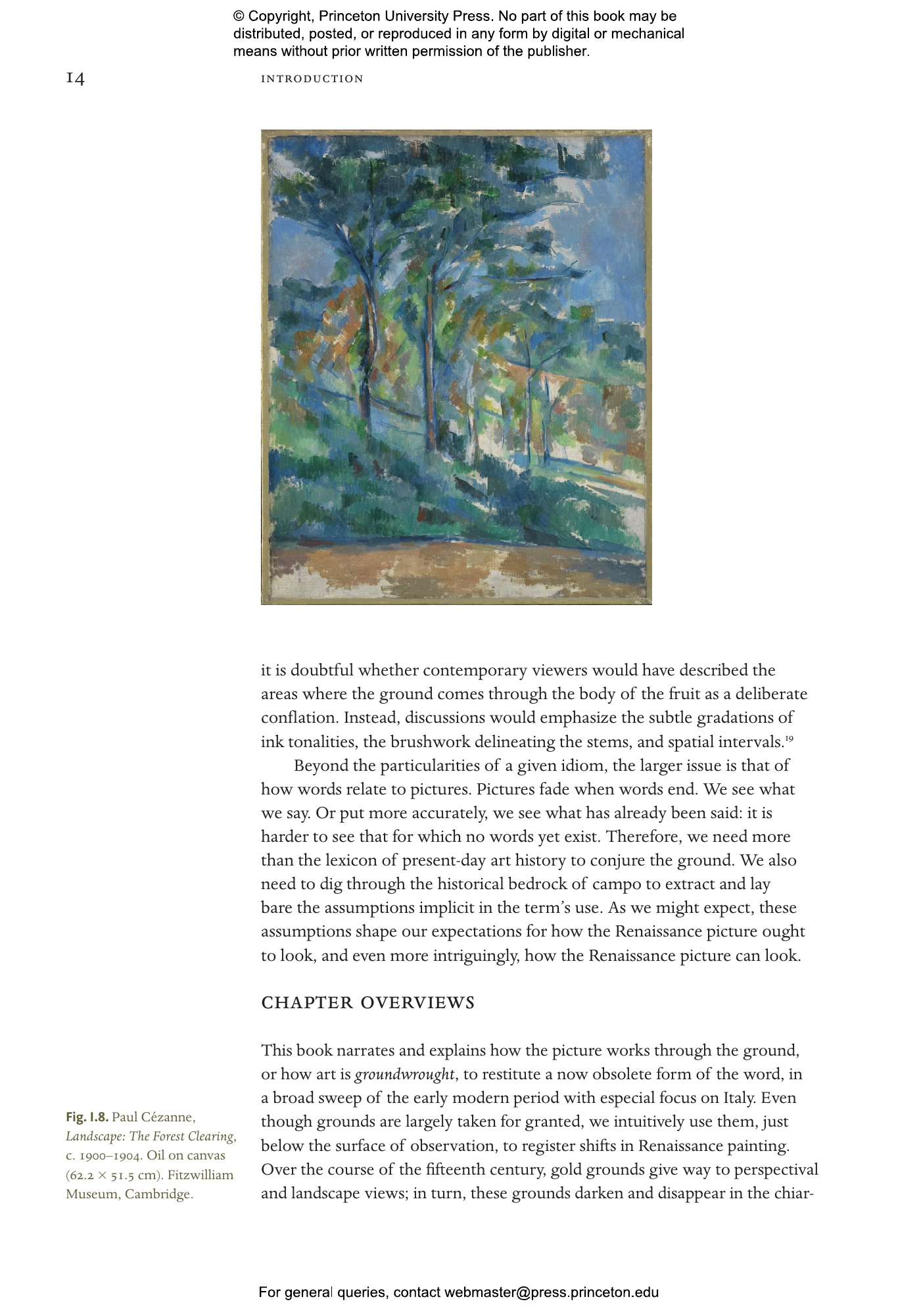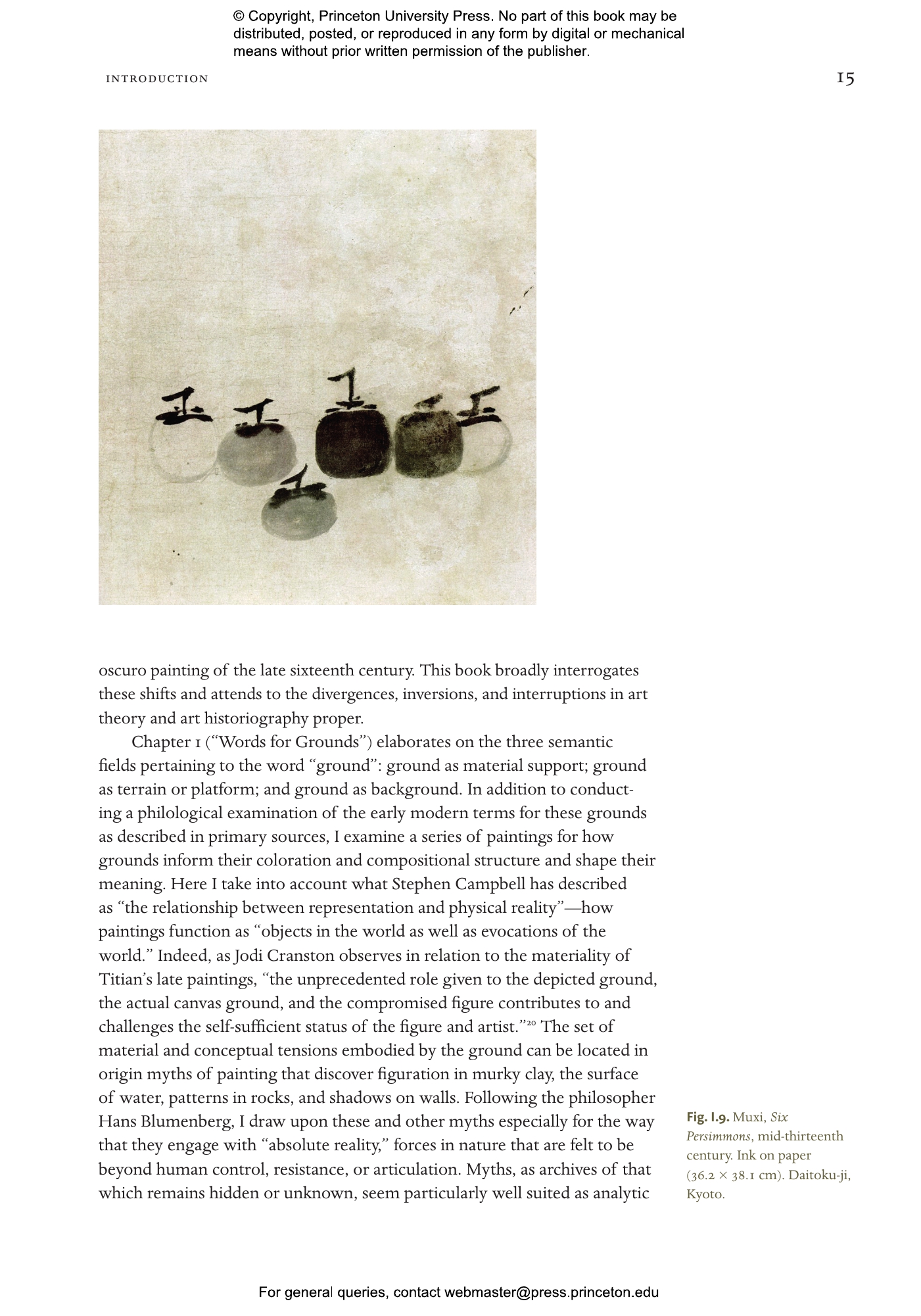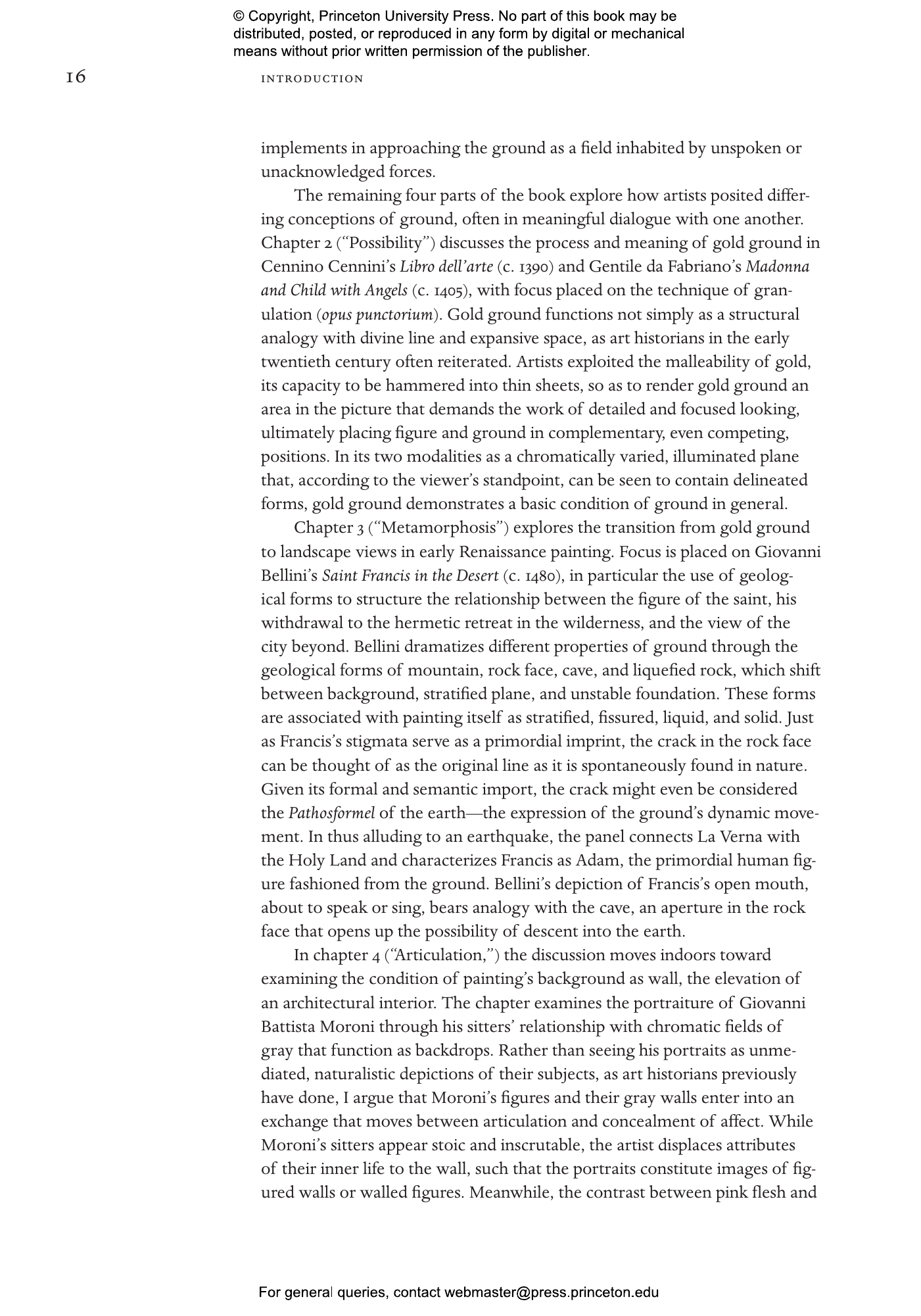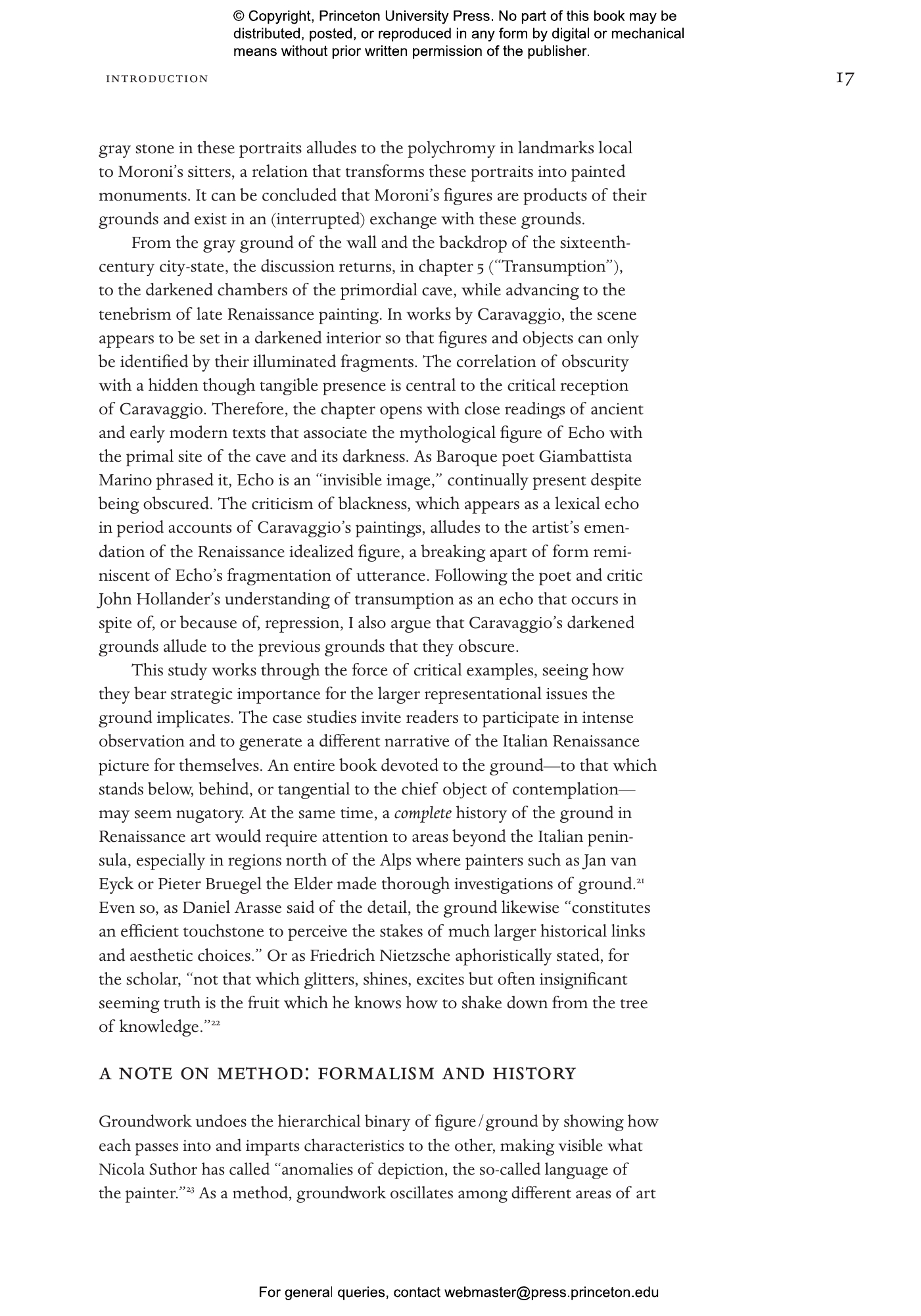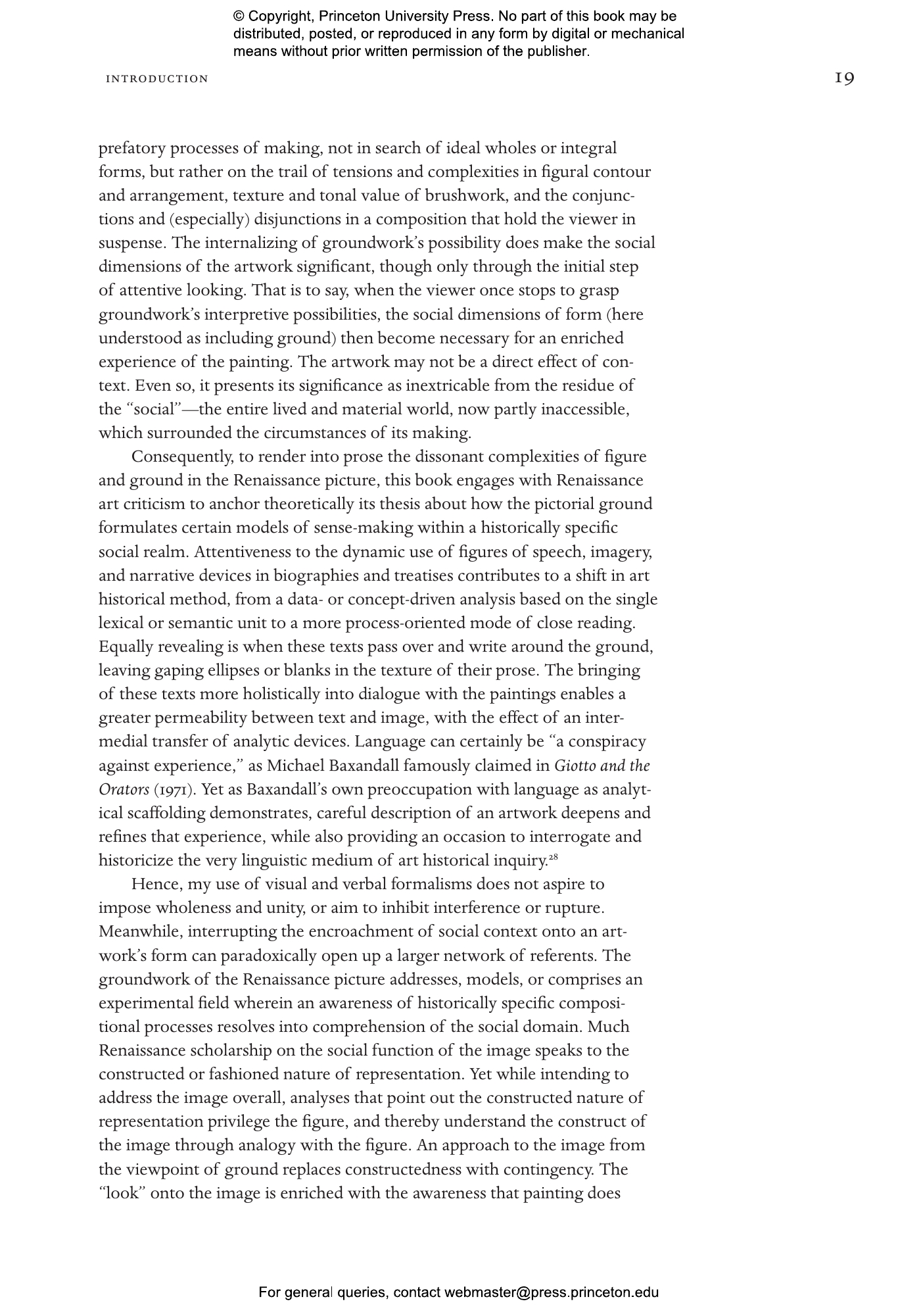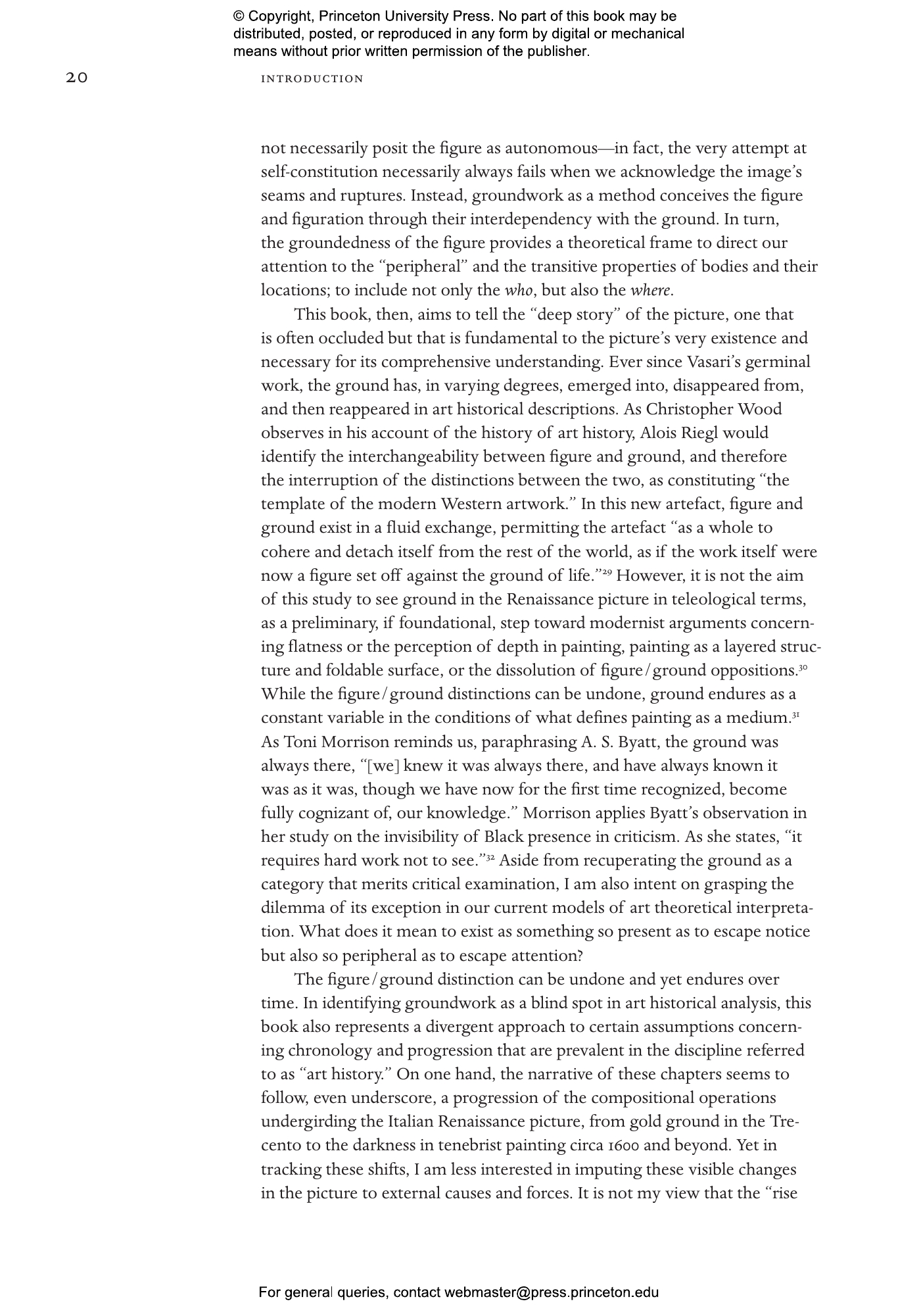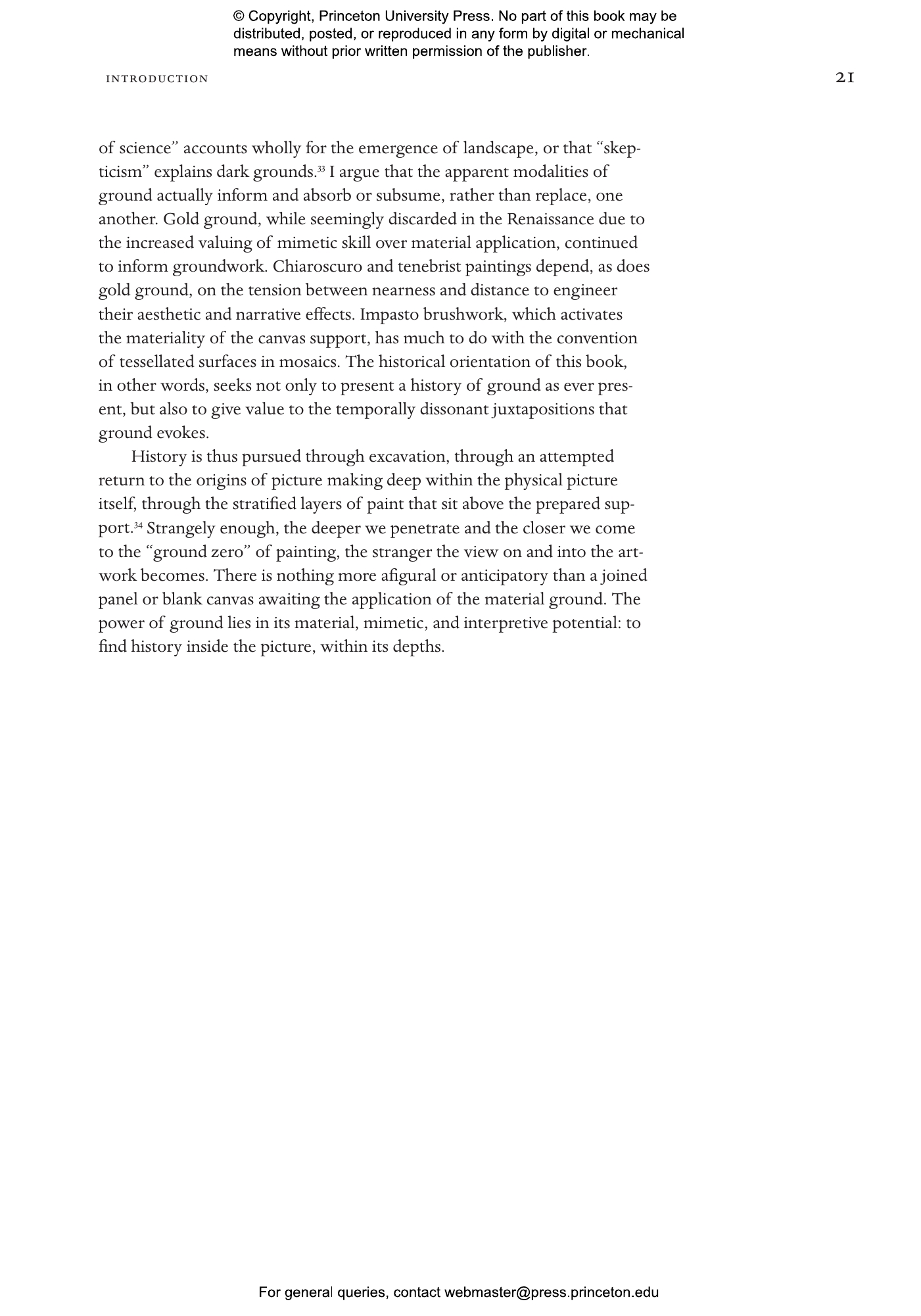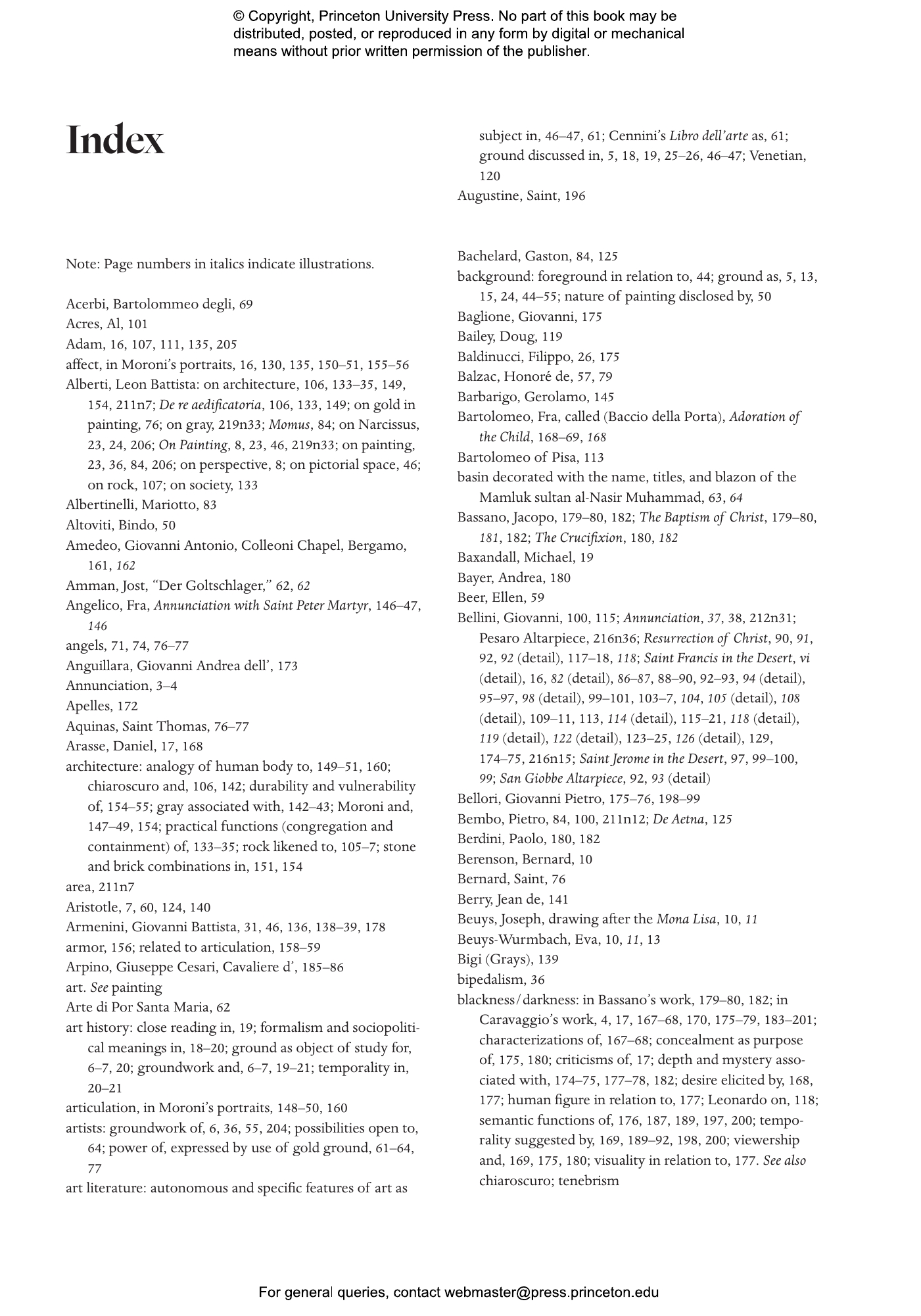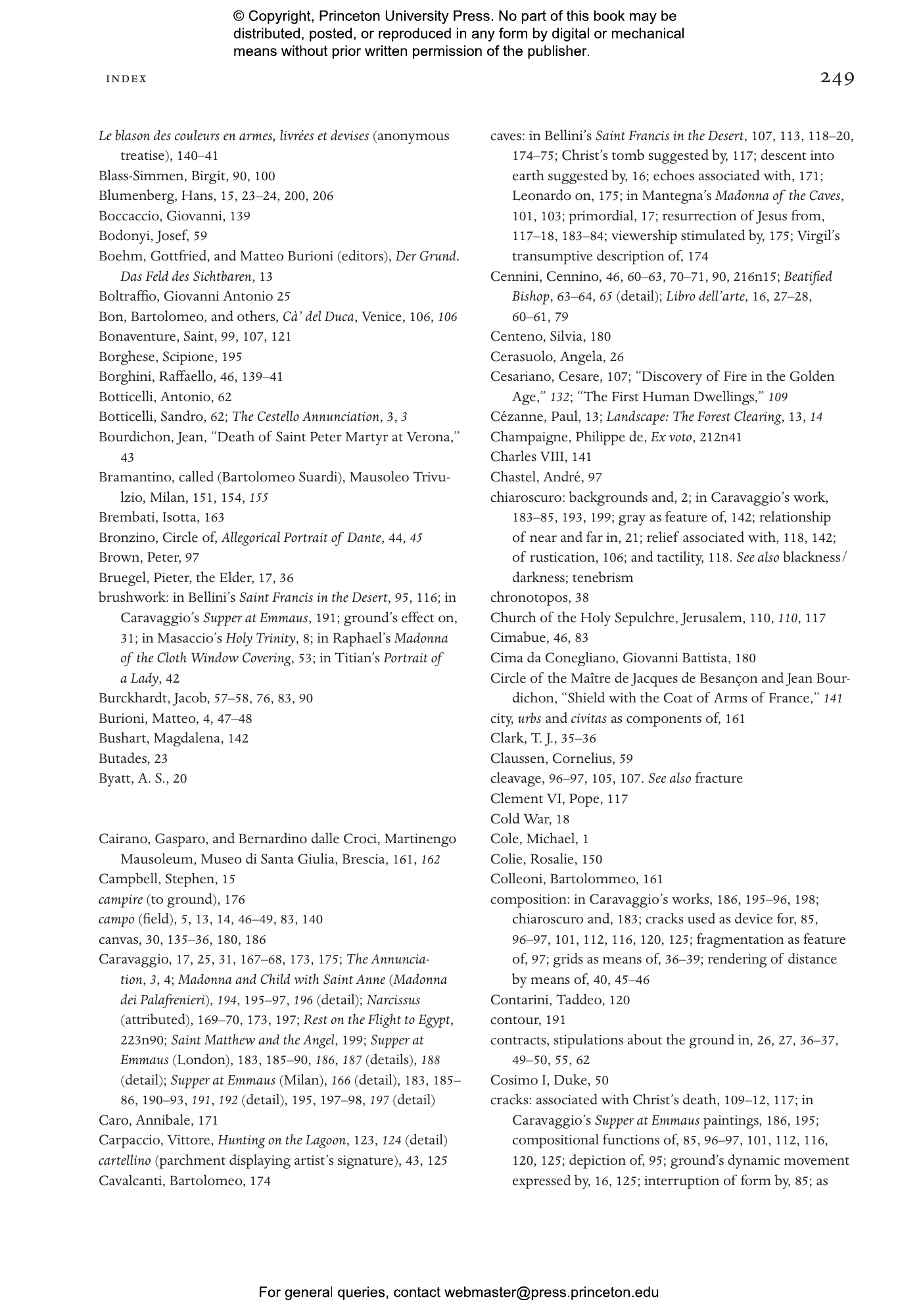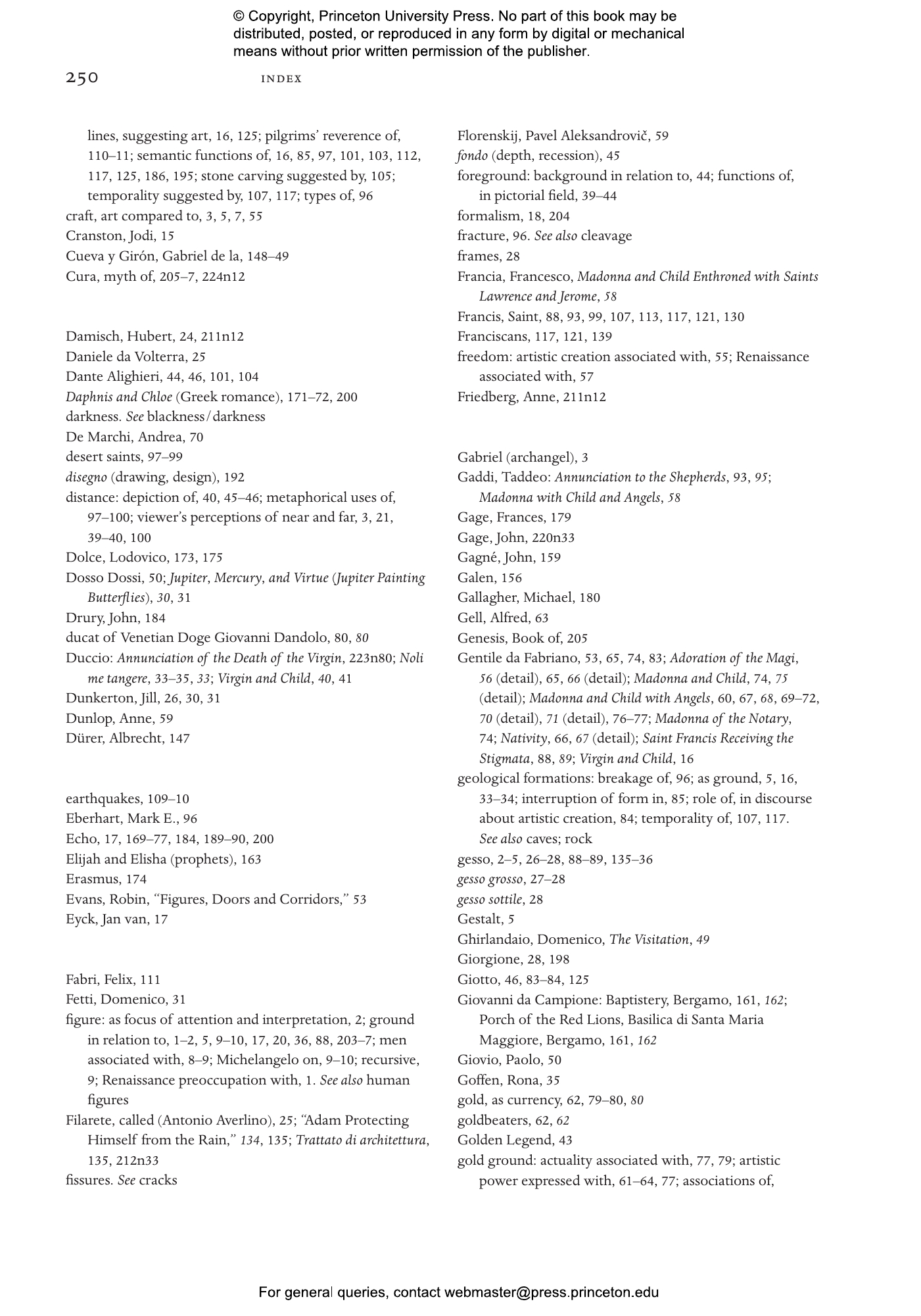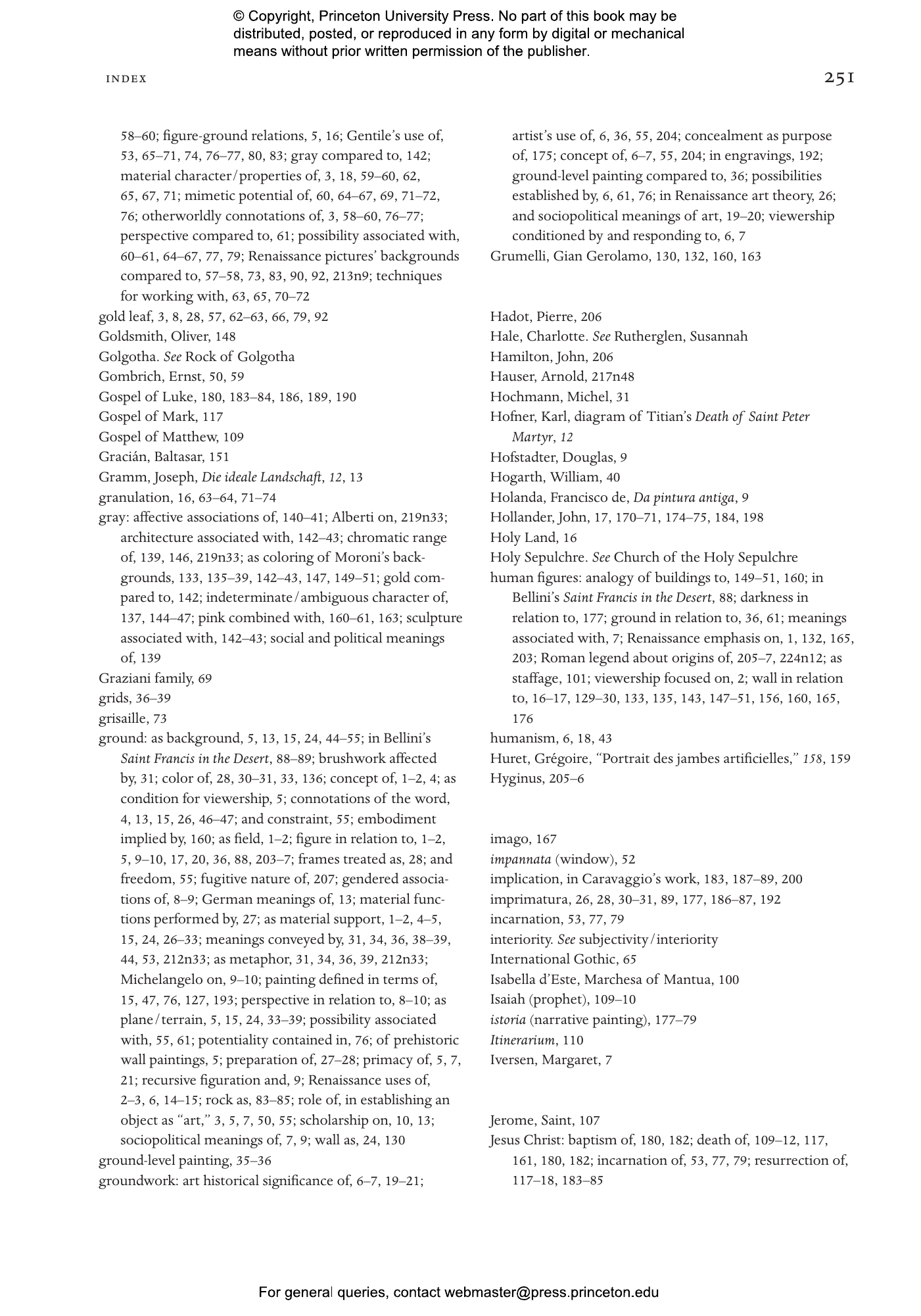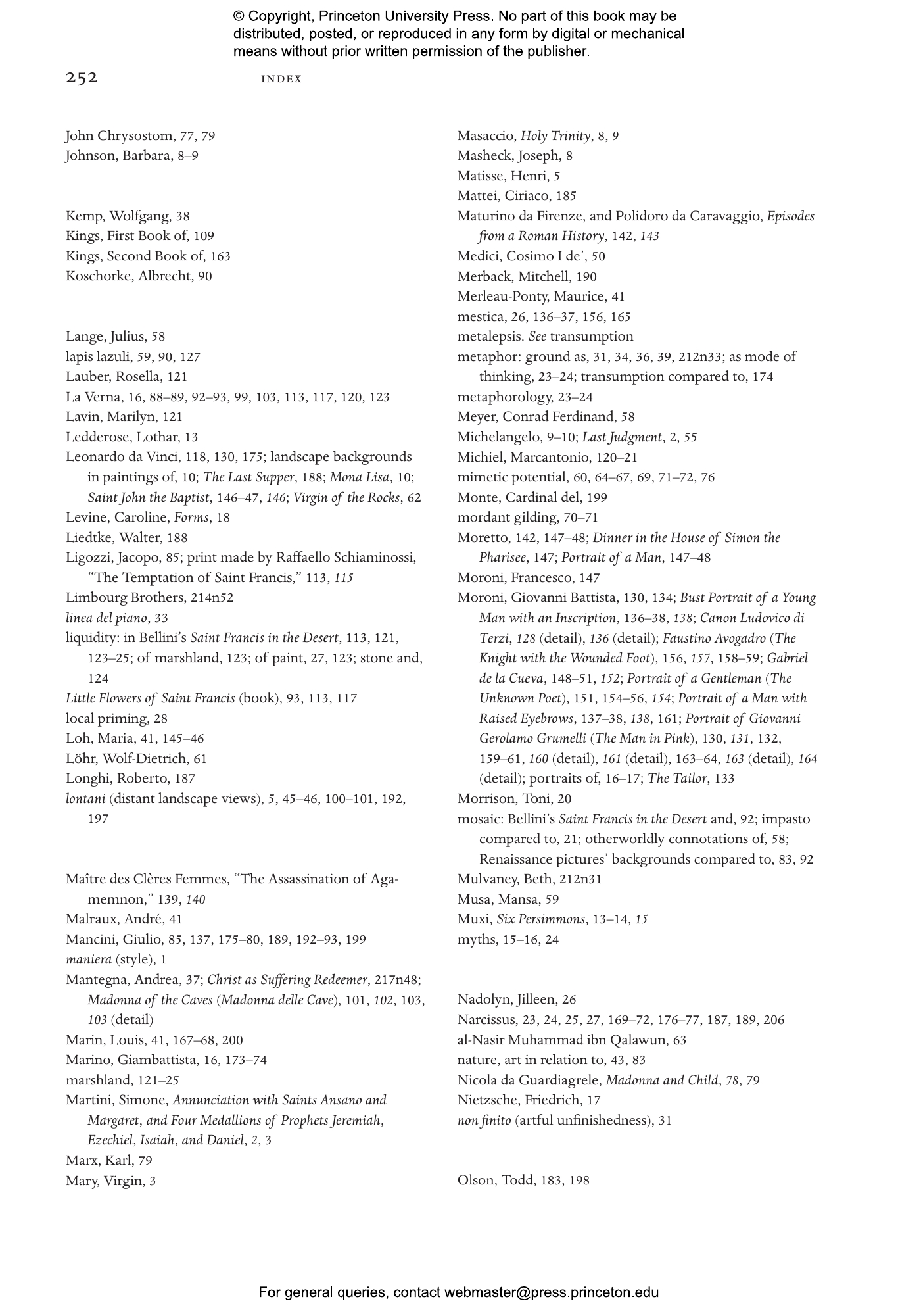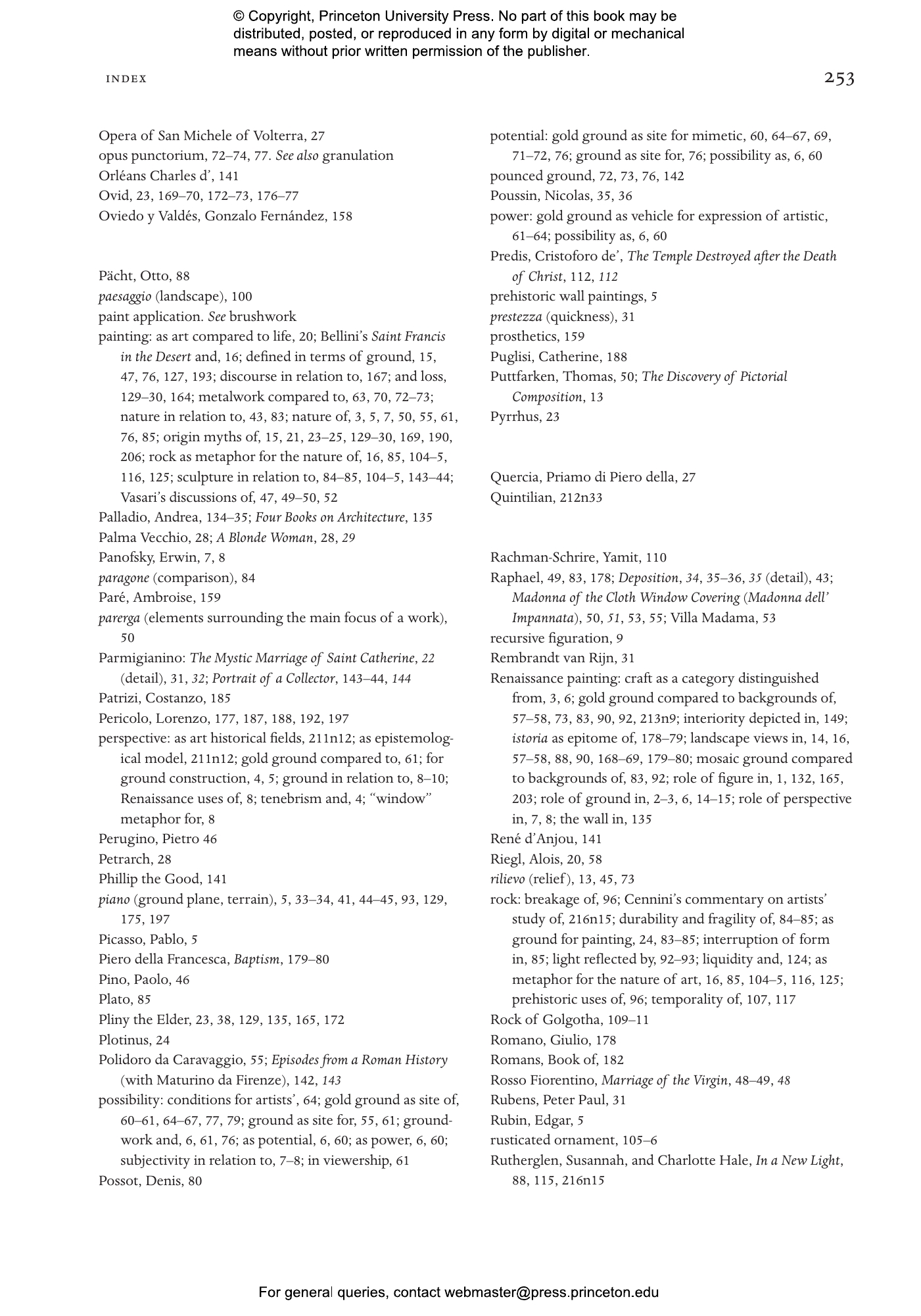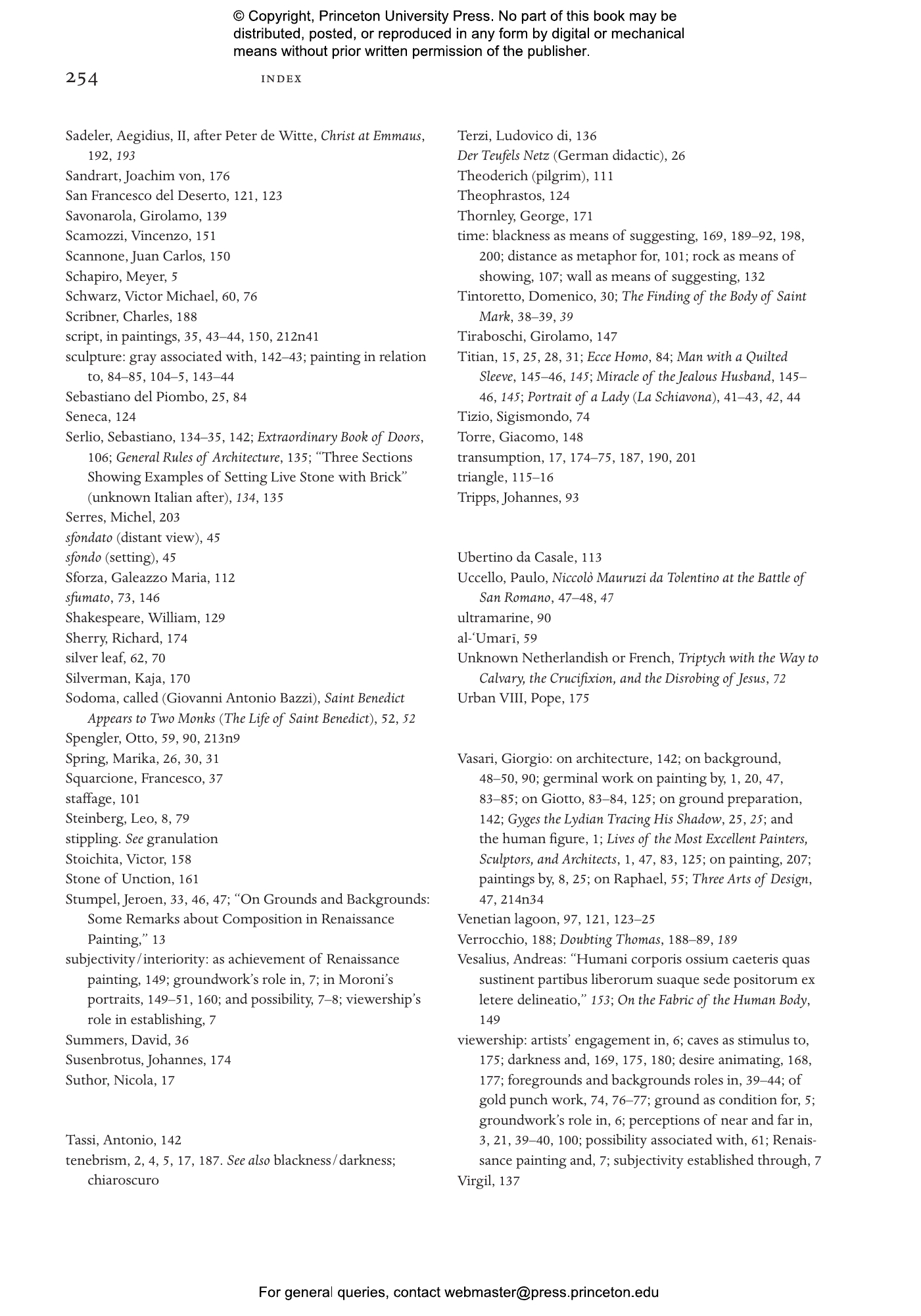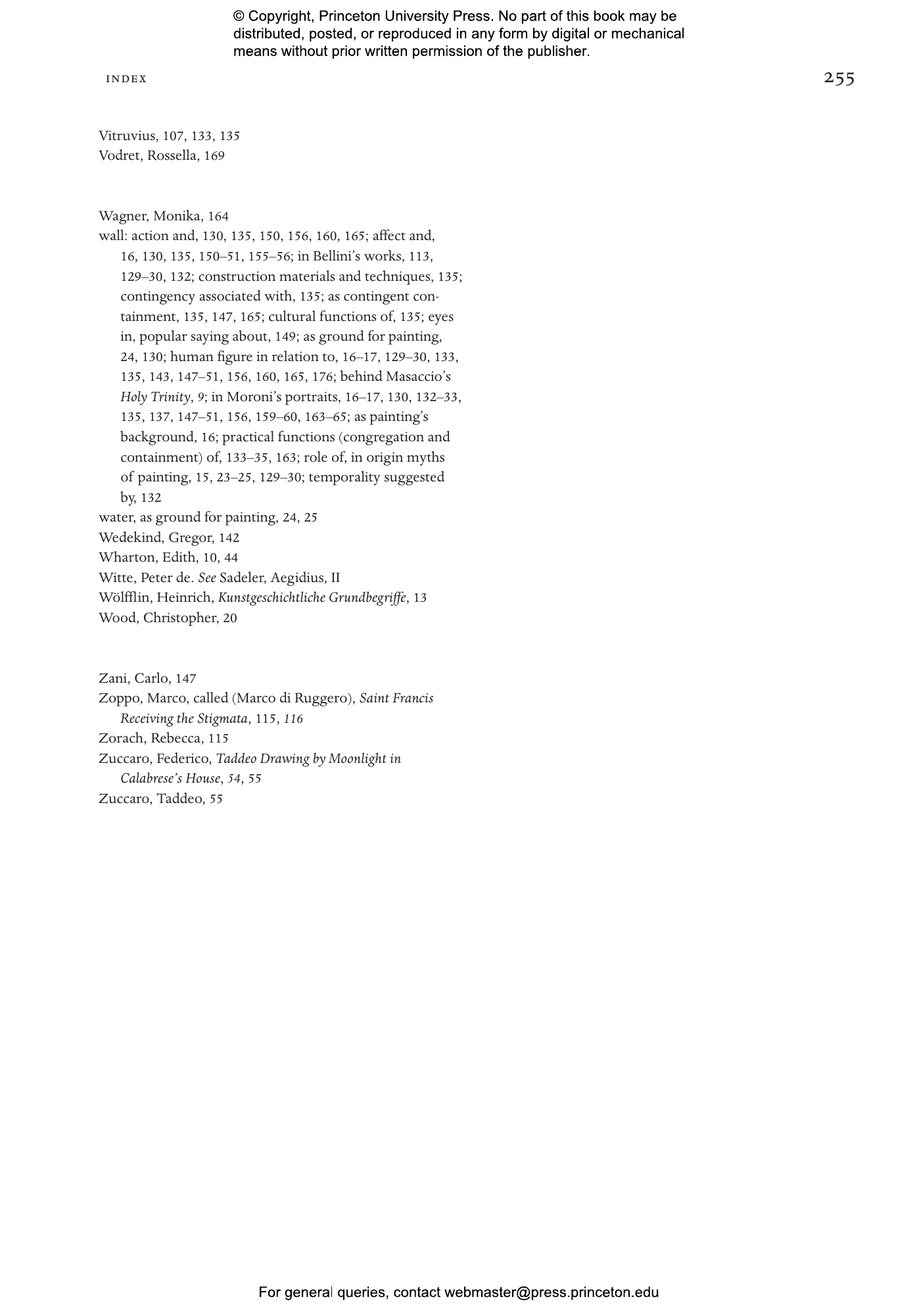The Italian Renaissance picture is renowned for its depiction of the human figure, from the dramatic foreshortening of the body to create depth to the subtle blending of tones and colors to achieve greater naturalism. Yet these techniques rely on a powerful compositional element that often goes overlooked. Groundwork provides the first in-depth examination of the complex relationship between figure and ground in Renaissance painting.
“Ground” can refer to the preparation of a work’s surface, the fictive floor or plane, or the background on which figuration occurs. In laying the material foundation, artists perform groundwork, opening the ground as a zone that can precede, penetrate, or fracture the figure. David Young Kim looks at the work of Gentile da Fabriano, Giovanni Bellini, Giovanni Battista Moroni, and Caravaggio, reconstructing each painter’s methods to demonstrate the intricacies involved in laying ground layers whose translucency and polychromy permeate the surface. He charts significant transitions from gold ground painting in the Trecento to the darkened grounds in Baroque tenebrism, and offers close readings of period texts to shed new light on the significance of ground forms such as rock face, wall, and cave.
This beautifully illustrated book reconceives the Renaissance picture, revealing the passion and mystery of groundwork and discovering figuration beyond the human figure.
Awards and Recognition
- An Apollo Book of the Year
David Young Kim is associate professor of art history at the University of Pennsylvania and a visiting lecturer at the University of Zurich. He is the author of The Traveling Artist in the Italian Renaissance: Geography, Mobility, and Style and the editor of Matters of Weight: Force, Gravity, and Aesthetics in the Early Modern Period.
"A tour de force analysis."—Yve-Alain Bois, Artforum
"A splendidly expansive work that successfully unites material with metaphor. Beautifully illustrated and playful in tone, this book should be celebrated for its originality and, above all, as an invitation to ever closer looking."—Imogen Tedbury, Apollo Magazine
"Groundwork fuses traditional formal analysis of a superior and detailed order with a provocative discussion of how the various meanings of “ground” . . . are a critical determinant of the painting’s spatial order and meaning."—Choice
"David Young Kim takes familiar paintings (Bellini’s Saint Francis in the Desert; Caravaggio’s Supper at Emmaus) and surprises us with new ways of looking at them. Combining intellectual ingenuity with close-looking, the book defines ‘ground’ in three ways and works out the consequences of doing so in a manner that owes as much to historical treatises as to technical study."—Apollo Magazine
"Clever and erudite…. David Young Kim invites his reader into the deeper recesses of Renaissance art-making and provides profound multilayered insights into an oft-neglected subject. The book is an intellectual tour de force. - Elizabeth Lisot-Nelson, Comptes Rendus"
“Like Daniel Arasse honing in on the overlooked detail, like Michael Camille queering medieval art from the edge, David Young Kim invites us to look awry at the Renaissance picture. In this beautifully illustrated book, Kim guides us through a series of critical meditations that reflect upon the crucial question: What kinds of new and liberating art histories await us if we embrace the ground with as much gusto as traditional accounts have given to the human figure? The response yields both a generously researched study and a refreshingly frank primer that demonstrates to its reader how to look closely and slowly at the way an image comes to life. At each step, Kim disentangles figuration from the stranglehold of the human body, allowing for a diversity of forms and viewpoints to emerge from the sidelines or, to be true to the book’s thesis, from the ground up.”—Maria Loh, author of Still Lives: Death, Desire, and the Portrait of the Old Master
“An elegantly written and thoughtful account of early modern Italian painting and a critique of the oversimplified opposition between figure and ground in picturing.”—Todd P. Olson, author of Caravaggio’s Pitiful Relics: Painting History after Iconoclasm
“This insightful and masterfully documented book is the first to illuminate the complex relationship between figure and ground in the Renaissance picture. Groundwork is destined to become a standard work in the field of visual studies.”—Victor I. Stoichita, author of The Self-Aware Image: An Insight into Early Modern Meta-Painting



